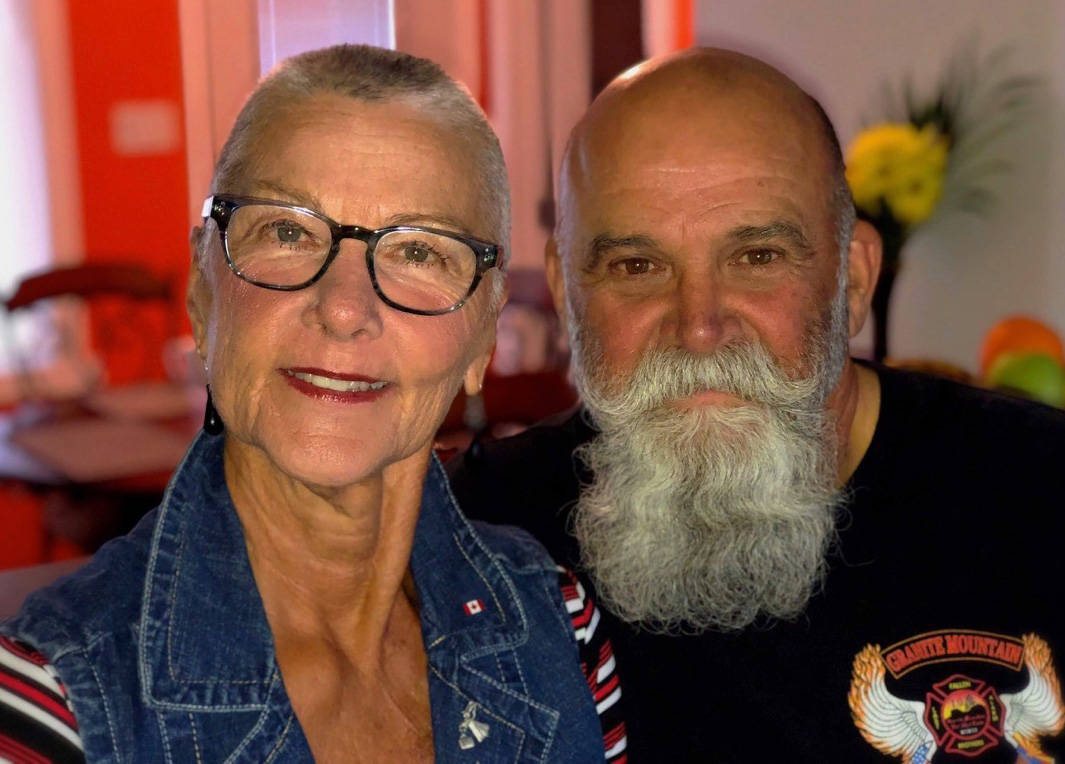A City woman continues to adjust to a new chapter of ‘wholeness’ after years of battling with cervical dystonia, a painful and chronic neurological disorder that caused her neck and head to constantly move to the right.
Val Robichaud first noticed symptoms in 2006.
A doctor visit was scheduled, followed by an appointment with a local neurosurgeon.
“He said, ‘You have cervical dystonia’ which is involuntary muscle movement in the neck. It has nothing really to do with the muscles, but has to do with the nerves,” she explained.
A referral was promptly made to a neurologist in Calgary and meanwhile, the mysterious condition was worsening.
“The only treatment at that time was botox,” she said, adding she was referred to a movement disorder clinic in Calgary as well. The botox helped to block the message from the nerve to the muscle – resulting in the constant movement.
“(The botox) would enter my system, and it would take about 10 to 15 days before it would get into that very area. But then I was experiencing different symptoms like not swallowing properly, and a knot in the side of my neck,” she said. “It’s not a quick fix,” she said, adding that she underwent that treatment for five years.
She found ways to help – for example, she would tend to turn to the right when greeting people as that’s the direction her head and neck would move as well. “Nobody ever said anything. I would overcompensate.
“I thought, where am I going to go with this?”
The involuntary movement was clearly taking its toll.
“It was like tightening a jar lid, and that lid was only going one way,” she said, adding that the constant movement of one’s head and neck in a particular direction is incredibly draining and exhausting to say the least. The only time the movement would stop was during sleep – she had to take two types of medication: one to calm the movement and the other to help her sleep.
But a ‘message of hope’ was right around the corner. “I found out through a Parkinson’s meeting about deep brain stimulation,” she said, noting a friend had invited her and her husband Al to the meeting.
Turns out Deep Brain Stimulation (DBS) was showing some tremendous results in folks with Parkinson’s, essential tremor, dystonia and chronic pain among other conditions.
A neurostimulator (sometimes referred to as a brain pacemaker) sends electrical impulses through implanted electrodes, to specific targets. “It’s an eight to 10-hour surgery, and I had to be awake during that time which was one of my concerns. But I was sedated.
“And then all of a sudden it was all over and I was in my recovery room. That was just for two days.”
For Val, the surgery certainly came at the right time as the years of seeing mixed results with botox had been a challenge to say the least, although she said it certainly works well for others. Other types of brain surgery were considered in those earlier years, but there were of course risks.
These days, anyone chatting with Val would be unaware there is anything wrong. “I have to see a neurologist every month, and every time they will ‘fine-tune’ me to find what is the best for me at this time,” she explained.
Adjusting to the treatment has been of course exciting, as there have been a stream of benefits to the couple’s life.
“I also feel that there is hope. That there is something out there that can help,” she said.
“At first, there was nothing so I had to be satisfied with just that (the botox). But I also thought I can’t go on like this.”
Reflecting on the long road of suffering with the condition and then discovering DBS, Val noted that, she, “Held onto my string of faith; I clung to faith.
“It was the only thing that held me together,” she said. “I also kept knocking, and I had a friend doing research that would print things and say, ‘Did you hear about this or this?’ I was blessed – I had someone alongside me to look into this.
“Having total support from my husband and circle of friends was also very important to help me to enjoy special moments and not only focus on my circumstance,” she said.
“I was also encouraged to get together with people and to be encouraged by others. I would realize that I was not alone, because everyone is going through something – we are all going through this life and we are hit by challenges or medical issues. I realized that this is not the worst but it’s the worst for me.
“I also realized that I had to be proactive with my own body. That it was okay to ask the doctor is there anything else? Where else can I go?”
Meanwhile, she’s passing what she has learned – and experienced – to others.
She recently learned of another woman diagnosed with the same condition, although her neck and head continually turns to the left. Val was quick to encourage her with her own message of hope.
“I said what I would encourage you to do is to talk to your family doctor and ask to be referred to a neurologist that deals with DBS.”



